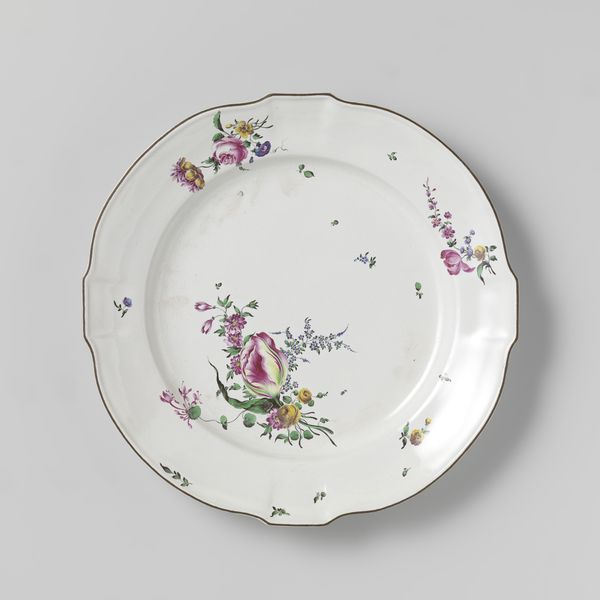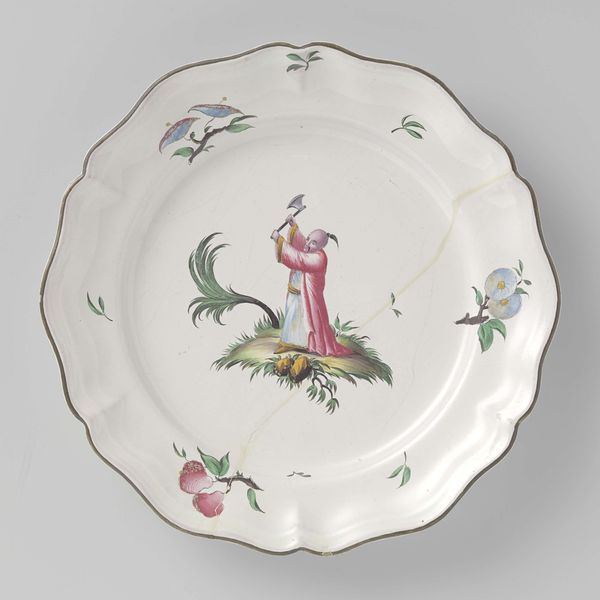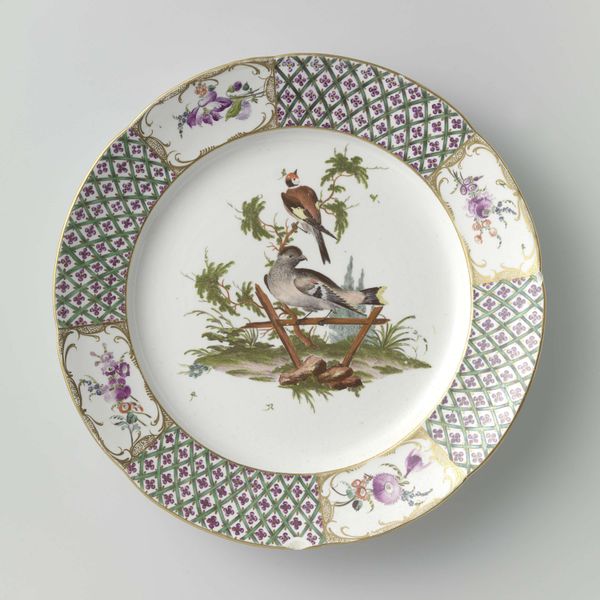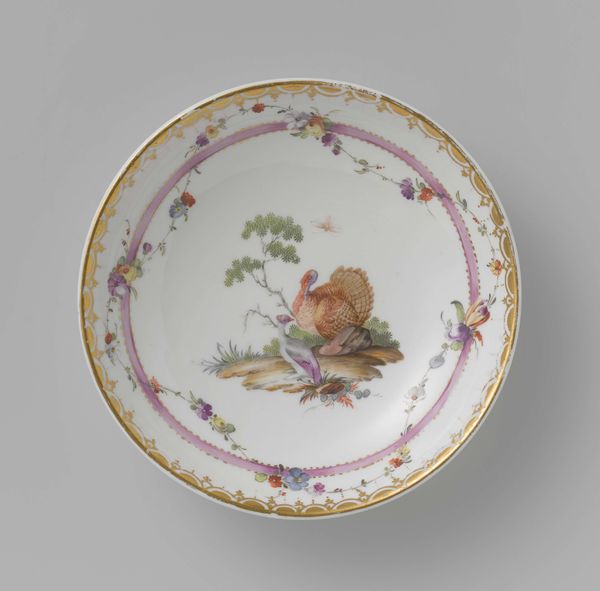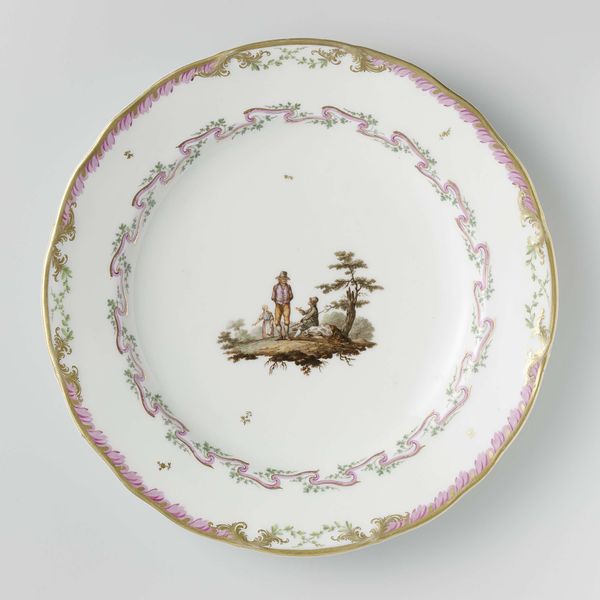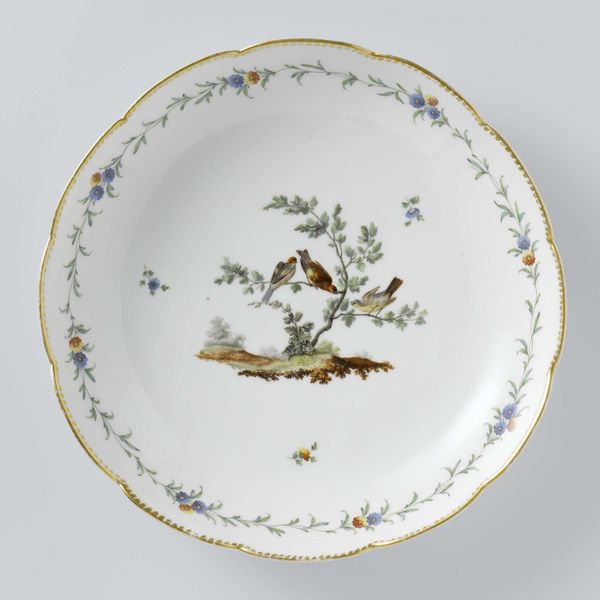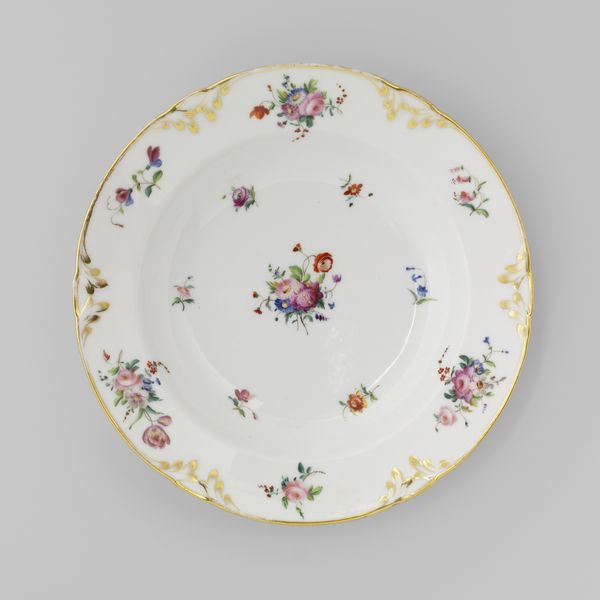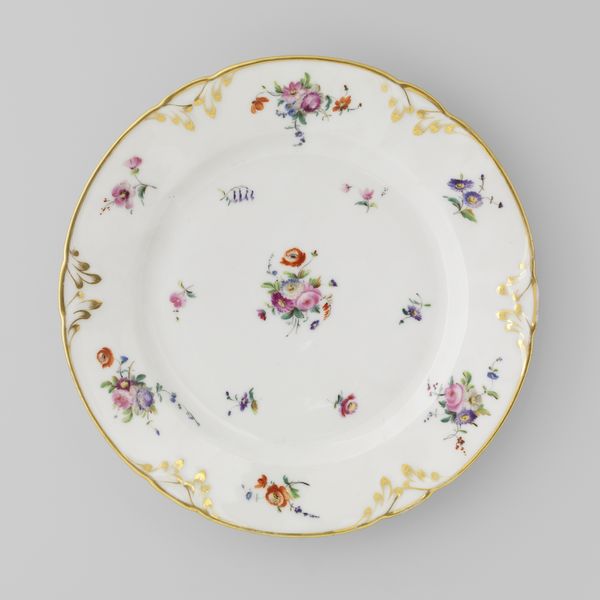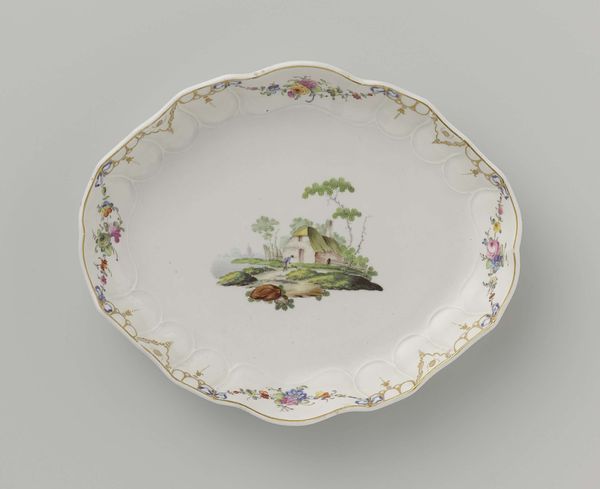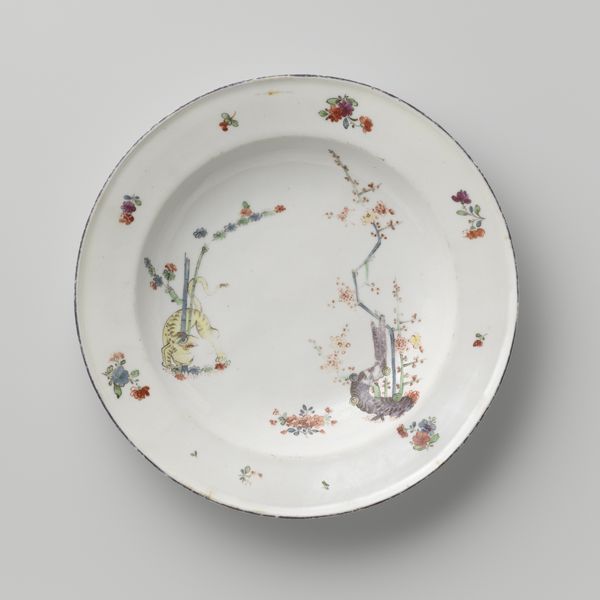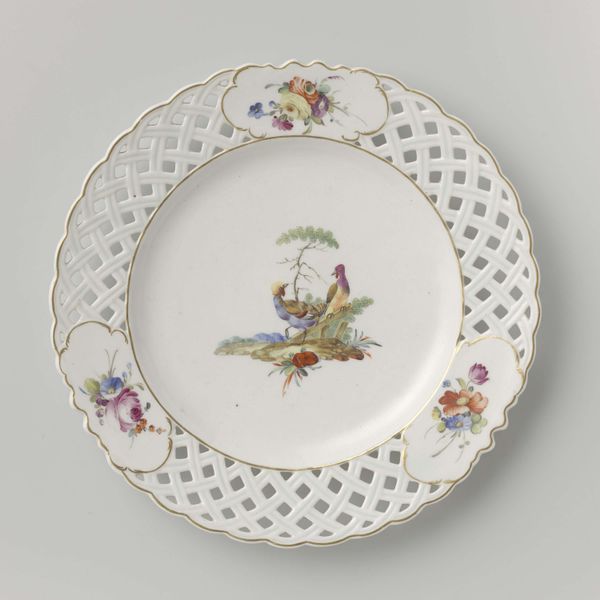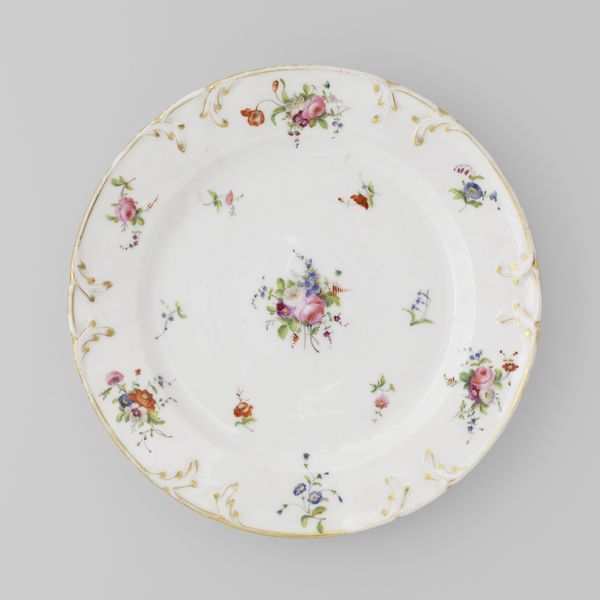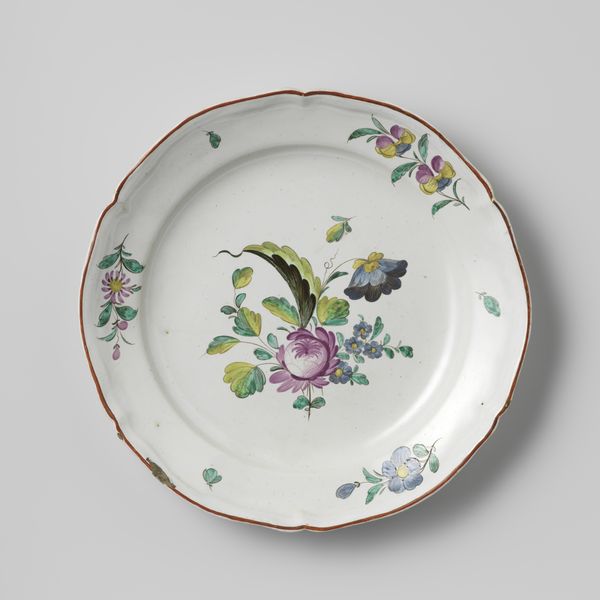
painting, ceramic, earthenware
#
painting
#
asian-art
#
ceramic
#
earthenware
#
stoneware
#
orientalism
#
genre-painting
#
rococo
Dimensions: height 3.7 cm, diameter 23.6 cm
Copyright: Rijks Museum: Open Domain
Curator: Here we have a decorative plate titled "Bord, beschilderd met een Chinees", or "Plate, painted with a Chinese man", made around 1760-1775 by Joseph Hannonge. It's earthenware, carefully painted with what seems to be an idyllic scene. What's your first impression? Editor: It feels like a porcelain daydream, utterly removed from reality. Look at the delicate floral motifs around the edge, and then this strangely miniaturized scene in the center. It speaks of luxury and exoticism, but with a definite Rococo sensibility. Curator: Exactly. The object itself is key. This isn’t just earthenware; it's a manufactured item, intended for a specific market fascinated by the "Orient." Consider the labor involved: shaping the clay, firing it, the hand-painted decoration, and its place in global trade routes. The "Chinese man" isn't rendered realistically, is he? It’s pure fantasy, a decorative element applied with Rococo flourish. Editor: And the scene itself! A lone figure fishing… it's orientalism packaged for a European audience. It caters to a very particular gaze, portraying an imagined "other" as peaceful and picturesque. Note the insect figures peppered throughout the work - not the artist representing the subject with gritty realism. Curator: Yes, the material and the image are completely intertwined. The plate becomes a vehicle for projecting European desires and biases onto the "Orient". The artist probably never encountered a real "Chinese man”, so the image springs from existing artistic tropes. Editor: Right, this is less about accurate representation and more about solidifying existing power structures. Wealthy Europeans consume this object, reinforcing their imagined superiority through its ownership and display. How fascinating that such blatant fabrication could become a mark of status! Curator: And that’s where the history of collecting and display comes in. This plate wasn't made to be hidden; it was meant to be seen, admired, and perhaps, a little bit envied. Editor: Indeed. Analyzing how pieces like this function within the larger social landscape can truly highlight the relationship between trade, imagery and politics of the period. Curator: Seeing the connection between material production, cultural appropriation, and market dynamics is so crucial, especially now. Editor: A powerful, and unsettling illustration of the art world. Thank you.
Comments
No comments
Be the first to comment and join the conversation on the ultimate creative platform.
